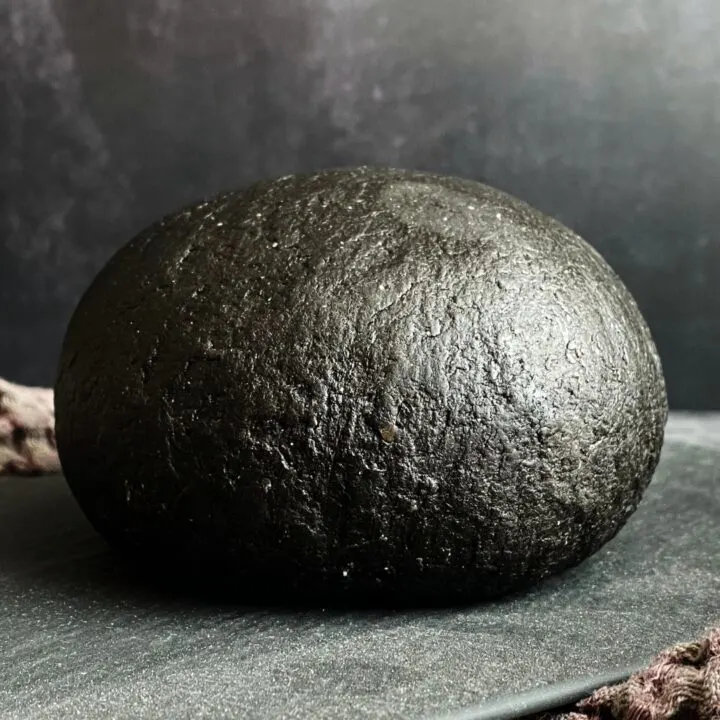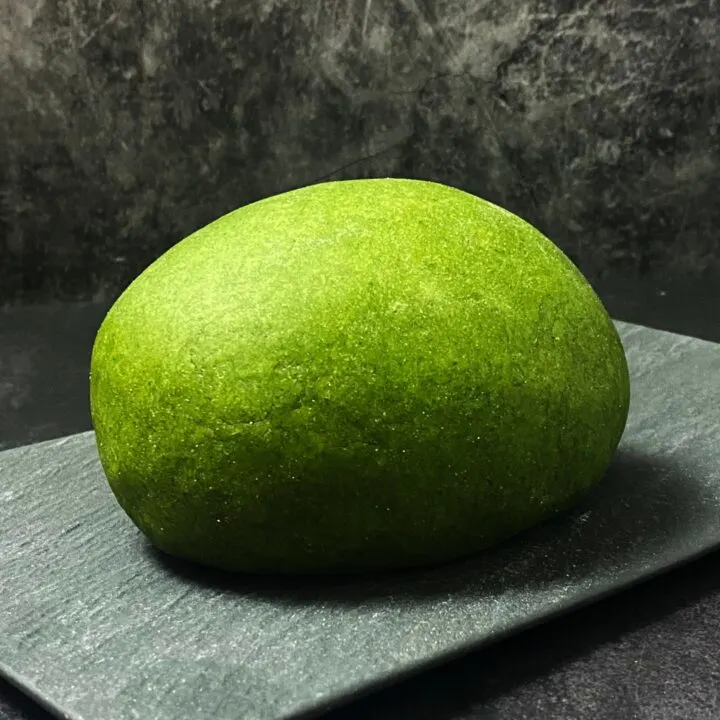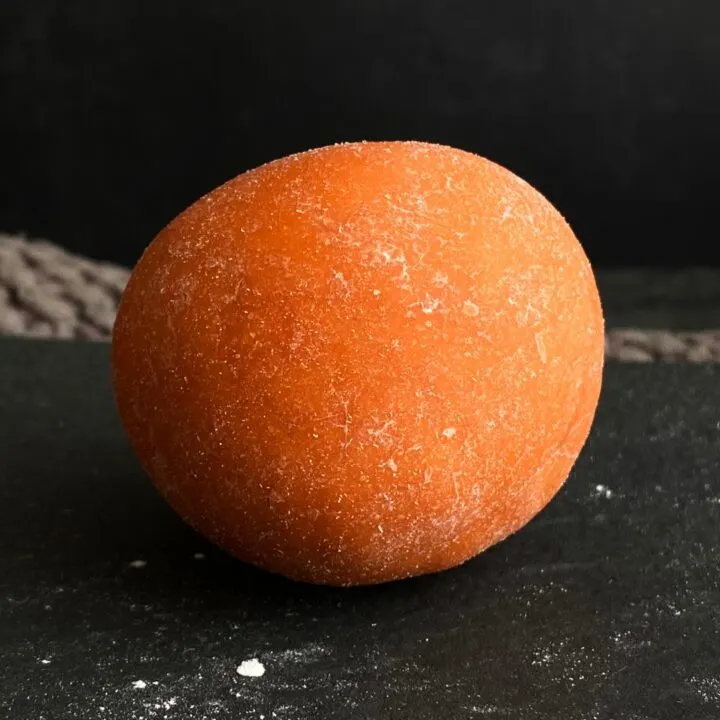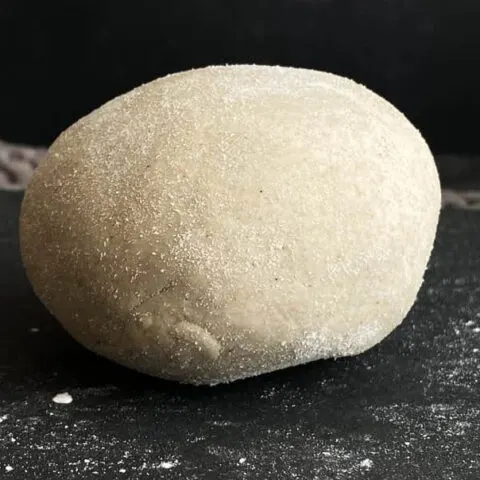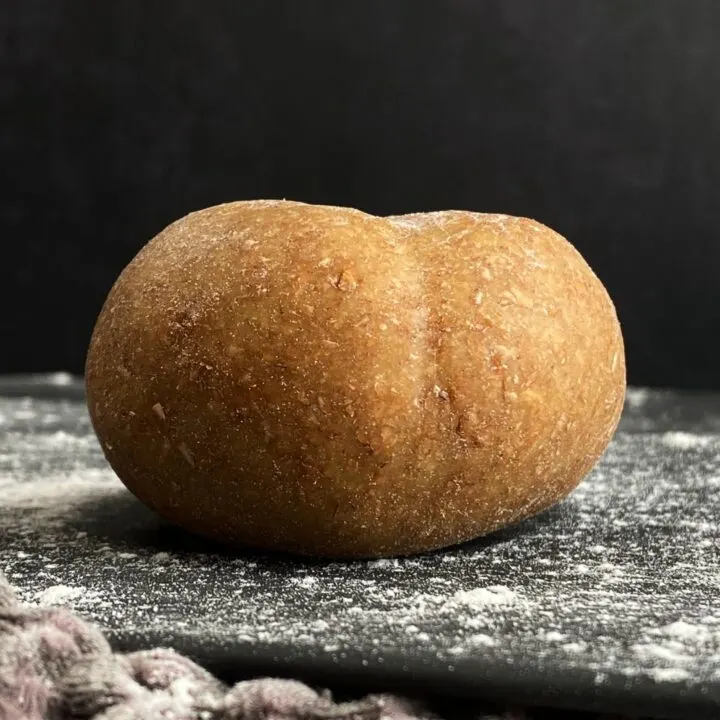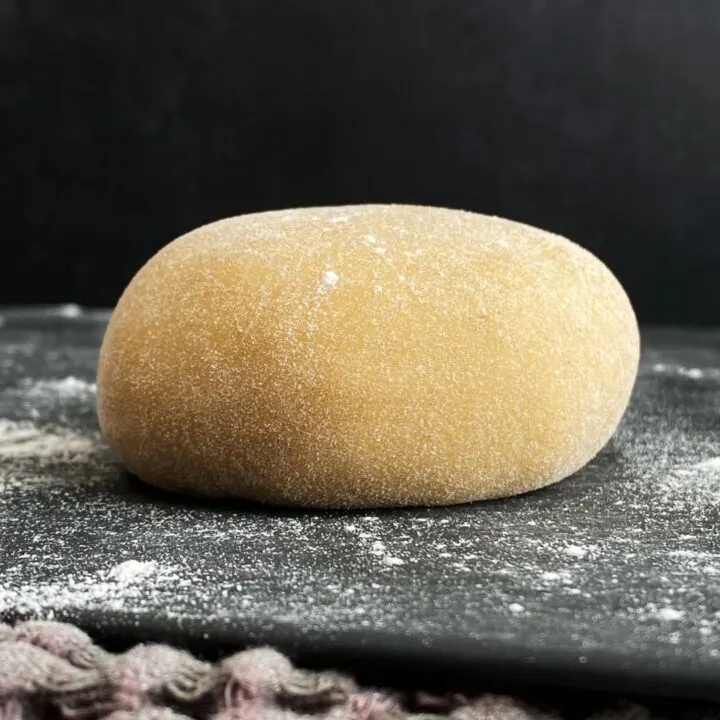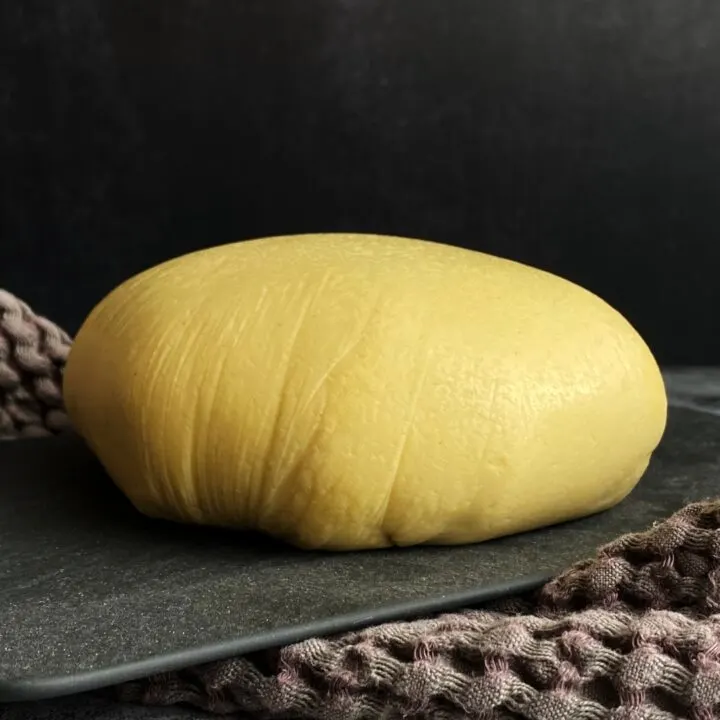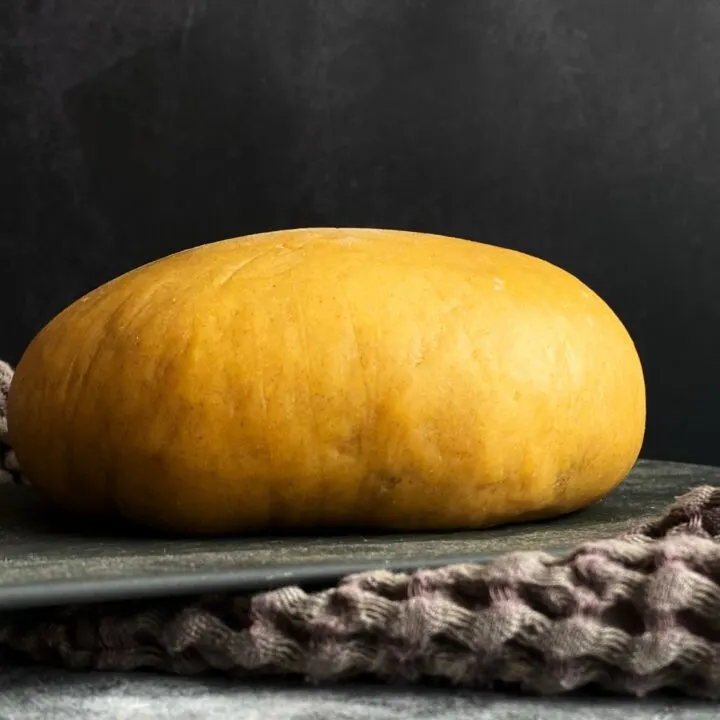Have you ever wondered how to make the perfect Italian pasta dough? This article will show you how to make perfect pasta dough at home.
First, I’ll introduce the two essential Italian pasta dough recipes:
- The basic recipe for Italian egg dough.
- The basic formula for vegan pasta dough with semola
You will find step-by-step instructions for making pasta by hand and with a food processor for each recipe.
After that, you’ll find important information on how to store pasta dough and the appropriate quantities so you’ll always have enough pasta.
At the end of the article, I’ve written an advanced guide with tips for making the perfect pasta dough. Below that, you’ll find a selection of 15+ pasta dough recipes to try. Good luck!
2 Traditional Recipes for Pasta: Egg and Semolina Dough
In Italy, two basic recipes for pasta dough have become established:
- Egg pasta dough originates in northern Italy and consists of soft wheat flour and eggs. This formula creates a protein network that gives the dough the properties needed to form pasta: It becomes incredibly stretchy and can be rolled out into thin sheets that can be used to create flat ribbon noodles and stuffed pasta without tearing.
- The pasta dough without eggs is mainly at home in southern Italy, where eggs were scarce at the time. That is why it is made exclusively of flour and water. Instead of soft wheat, durum wheat flour (semola) is used for its production; It has a higher gluten content and compensates for the lack of protein from eggs. The result is a soft dough with good plastic properties and is particularly suitable for pasta that needs to keep its shape.

Egg Pasta Dough:
4 Servings
- 14 ounces (400 g) of all-purpose flour (or Italian flour Tipo 00)
- 1/2 tsp (4 g) of salt
- 4 eggs (7 ounces or 200 g)
(Find my exact product recommendations in the recipe card)
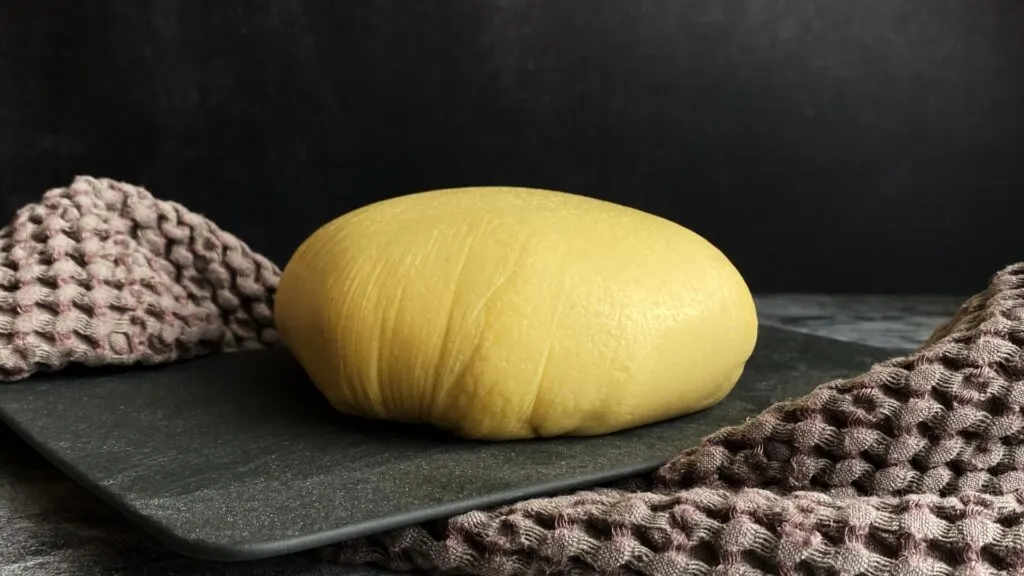
Semolina Pasta Dough:
4 Servings
- 14 ounces (400 g) of durum wheat flour (semola di Grano Duro, rimacinata)
- 7 ounces (200 ml) of hot water
- 1/2 tsp (4 g) of salt
(Find my exact product recommendations in the recipe card)
You can use both recipes to make various pasta shapes. The simplest forms include tagliatelle, fettuccine, and pappardelle.
However, because they have similar yet different dough characteristics, there are certain types of shapes for which one recipe is better suited.
Mixing flour types or adding olive oil and salt can further influence and adjust the dough structure: This is where the threshold between amateur cook and Italian pasta master becomes visible.
With a few hints, even you and I can better understand the art of pasta dough and achieve a better result! You can find more about this below in the guide.
But for starters, choosing one of these two recipes and starting with the production is sufficient and will yield good results.
How to Make Egg Pasta Dough (Step by Step)
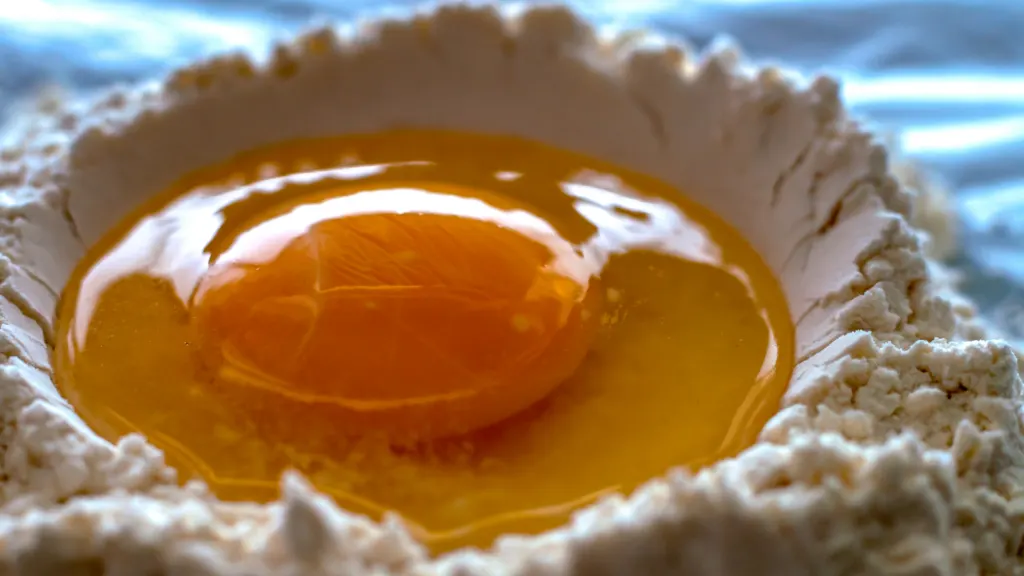
Step 1: Form a flour well and whisk the eggs to form a dense mass.
First, I empty the flour on the work surface and form a hollow about 15 centimeters wide with a 1-centimeter thick bottom.
Then I sprinkle the salt and the eggs into it.
With a fork, I break the yolks and whisk the egg mixture. Then I gradually incorporate the flour from the outer wall and flour bottom without creating an opening.
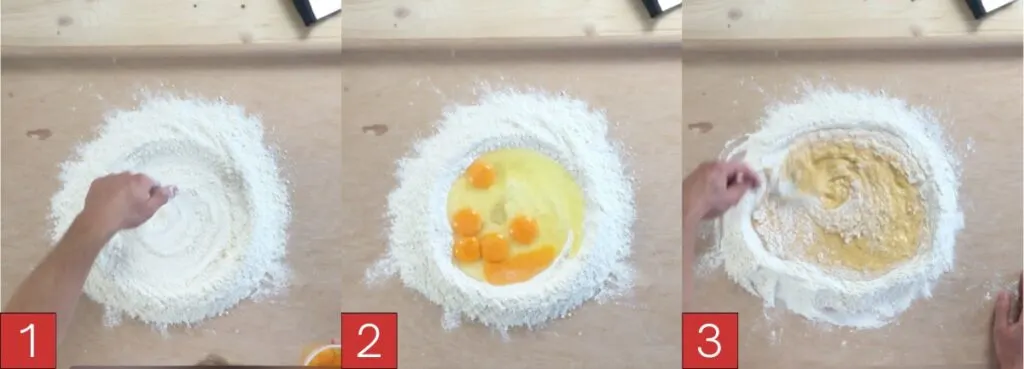
Step 2: Scrape the flour onto the egg mixture from each side, creating a crumbly dough.
Once a “mushy” mixture has formed, I run the dough scraper under the flour base from each side and fold it over the well.
I then pass the mixture through several times, creating a crumbly dough.
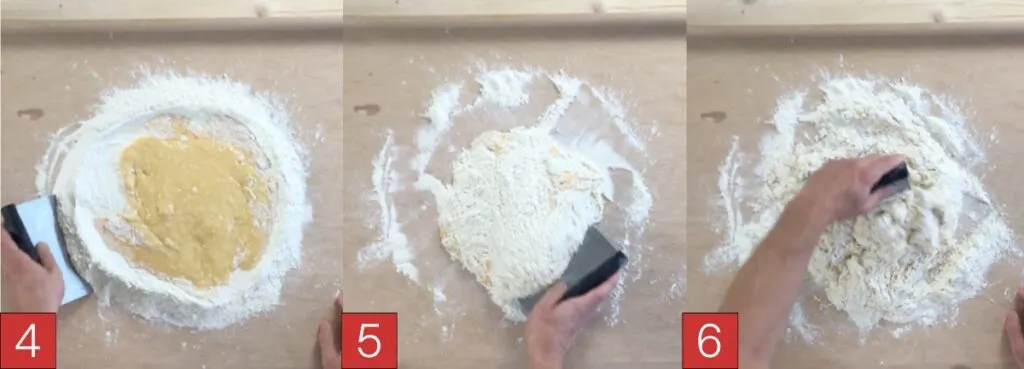
Step 3: Press the crumbs together to form a lump of dough.
Next, I scrape any flour residue from my dough scraper and continue with my hands. To do this, I press the dough crumbs together into a lump.
If the mixture doesn’t want to form a lump, you can add a little water generously (picture 2).
You will work the remaining crumbs into the dough in the next step.
If you need help with this step, you can find tips against crumbly pasta dough here.
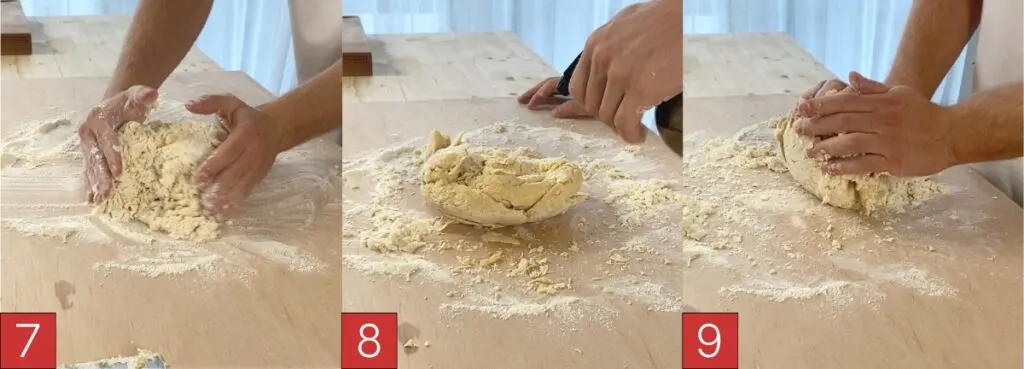
Step 4: Knead the dough into a ball for about 8 minutes.
There are several kneading techniques, one of which I find particularly compelling:
Apply forward pressure to the dough with the heel of your hand. Pull the dough back with the other hand, gently rotating it about 45°. Repeat the process until all the dough crumbs are incorporated.
Knead the dough for at least 8 minutes or until the surface feels silky and no longer sticks.
If the dough still sticks to your hands, you will need to sprinkle flour on the work surface and work it in.
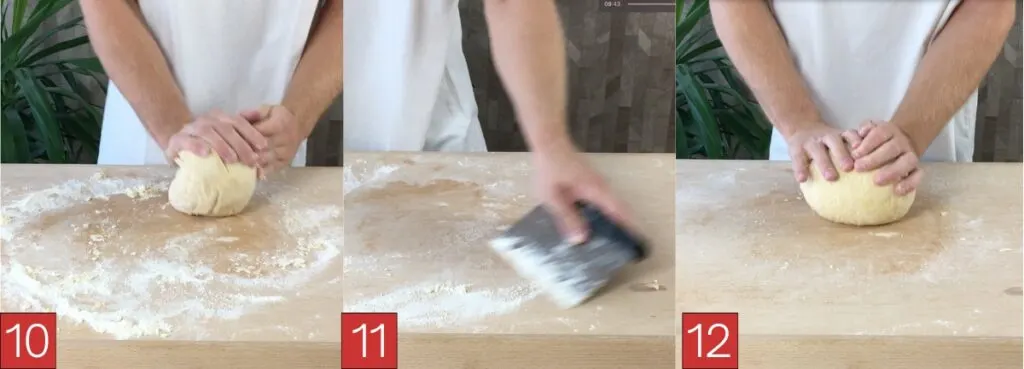
Step 5: Wrap the pasta dough in plastic wrap and let it rest for 30 minutes.
Once the pasta dough has the right consistency, you can wrap it in cling film and rest it for 30 minutes.
The resting time is essential because it rearranges the protein chains responsible for the dough’s stretchiness. That allows the dough to be rolled out thinly without returning to its original shape.
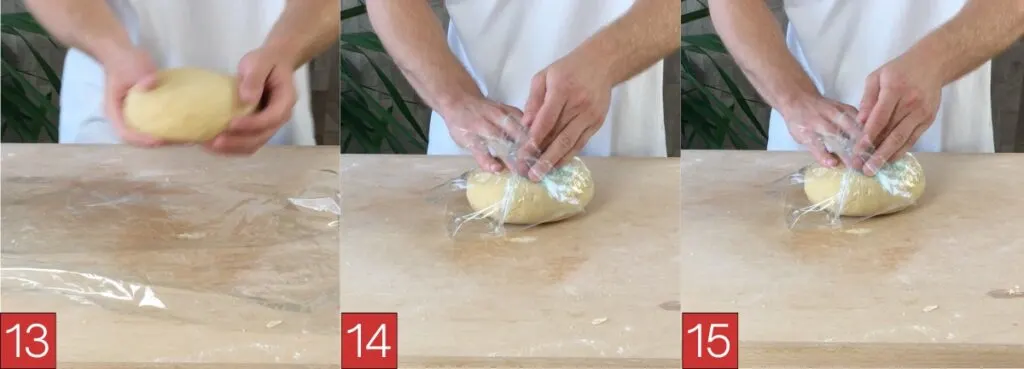
You made a classic Italian egg dough!
If you want to know how to form it into delicious pasta shapes, read the following guide:
How to Make Semolina Pasta Dough (Step by Step)
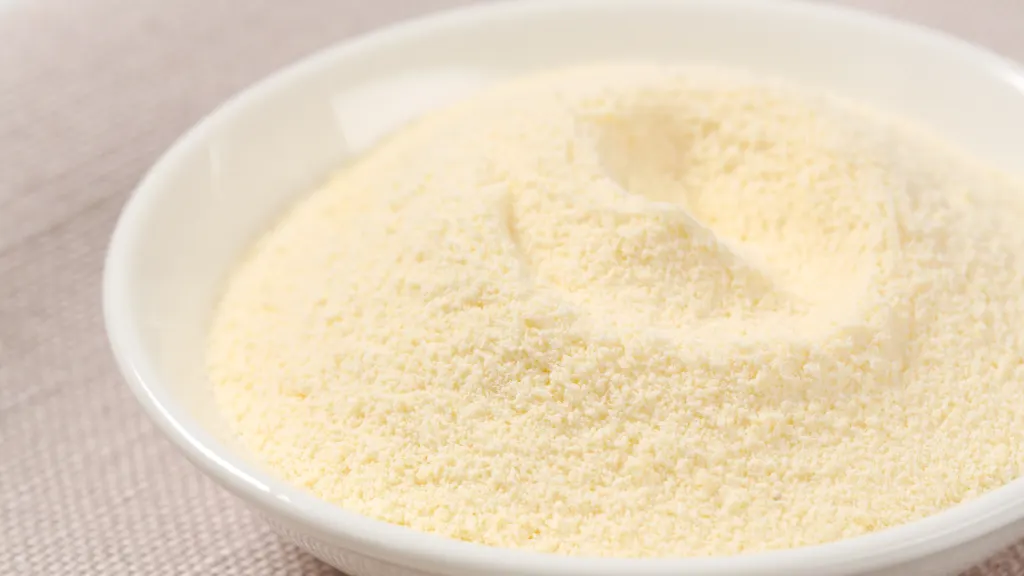
For the production, you need the following:
- A large worksurface A dough scraper (optional)
- A water spray bottle (optional)
If this is your first time making pasta dough, don’t stress and set aside one hour.
With a bit of experience, the process is relatively quick. It takes me about 15 minutes to knead the pasta dough, after which it should rest for at least 30 minutes before you shape it into pasta.
Step 1: Form the flour into a well and gradually add water.
Empty the flour onto the work surface and form a hollow in the middle.
Slowly pour the hot water into the center of the well and mix it with the flour using a fork.
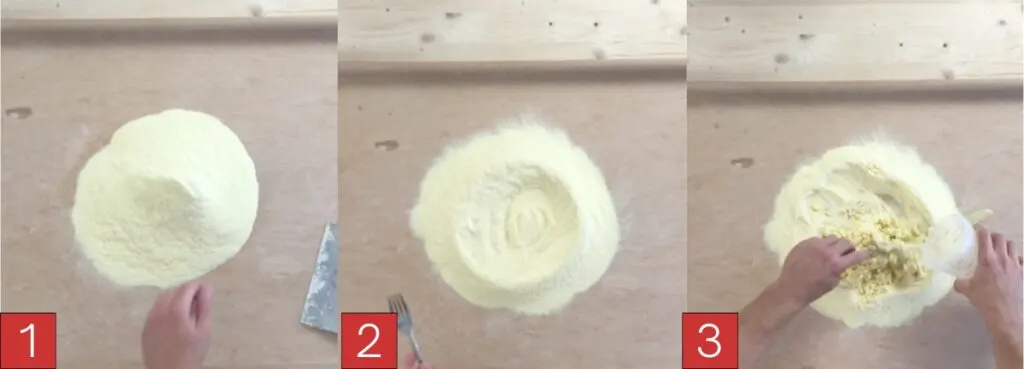
Step 2: Form the crumbly mass into a lump with your hands and knead for 10 minutes.
Press the crumbly mass into a lump of dough and knead it for at least 10 minutes.
Do not add any more water! The dough may appear dry, but the kneading will gradually incorporate all the flour into the dough.
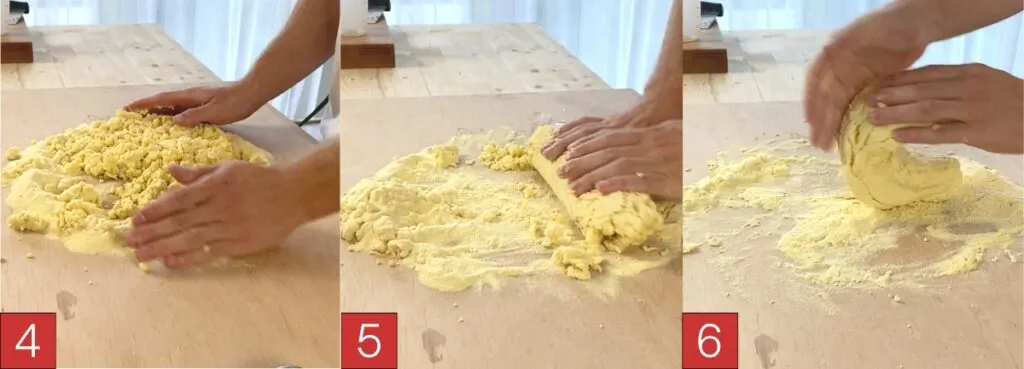
Step 3: Continue kneading until all the flour is incorporated into the dough.
There are several kneading techniques, one of which I find particularly compelling:
Apply forward pressure to the dough with the heel of your hand. Pull the dough back with the other hand, turning it slightly, about 45°. Repeat the process until all the dough crumbs are incorporated.
If, after 10 minutes of kneading, there is still flour on the work surface, add a (tiny!) amount of water to the dough (I use a flower sprayer for this). The remaining flour should then be easy to work into it.
If you need help with this step, you can find tips against brittle pasta dough here.
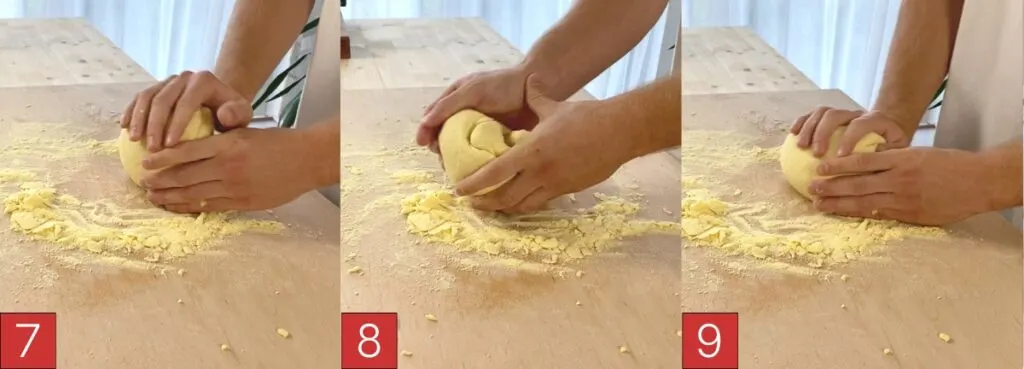
Step 4: Wrap the pasta dough in plastic wrap and let it rest at room temperature for 30 minutes.
It is ready only when the pasta dough has a smooth, silky surface and no longer sticks.
Then you have to let it rest for 30 minutes, wrapped airtight. To do this, wrap the dough as airtight as possible in plastic wrap and place it away from direct light to rest.
During the resting time, the gluten network inside the dough will rearrange itself, and the dough will become more elastic.

You made an Italian Semolina Dough!
If you want to learn how and which pasta to shape with it, check out the following article:
The secrets of the perfect pasta dough
I already touched on it at the beginning of this article:
The ingredients you use for your pasta dough directly affect its structure and physical properties.
Different dough properties are more suitable than others depending on the type of pasta you are shaping.
Here’s an example:
The pasta dough without egg, with durum wheat, has excellent plastic properties, that’s why it is used for orecchiette, among others:
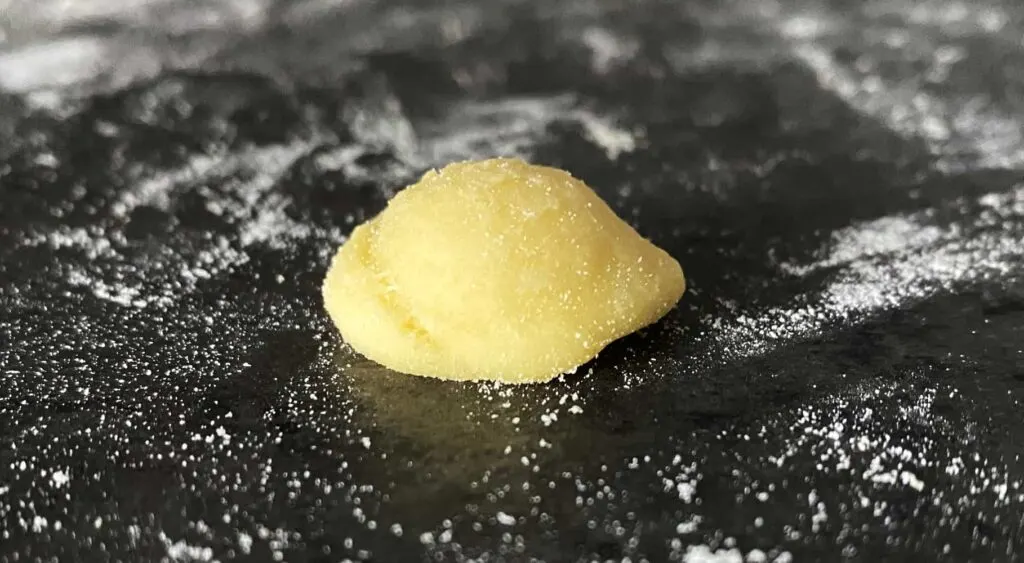
Orecchiette are small ear-shaped noodles that are often dried and provide fantastic bonding for sauce and finely chopped vegetables thanks to their cavity.
For the pasta to hold its shape after shaping and not collapse again, the plastic property of the durum wheat dough is required.
An extra-flexible variation of egg dough (more on that in a moment), on the other hand, is better suited for stuffed pasta like this Cappelletti:
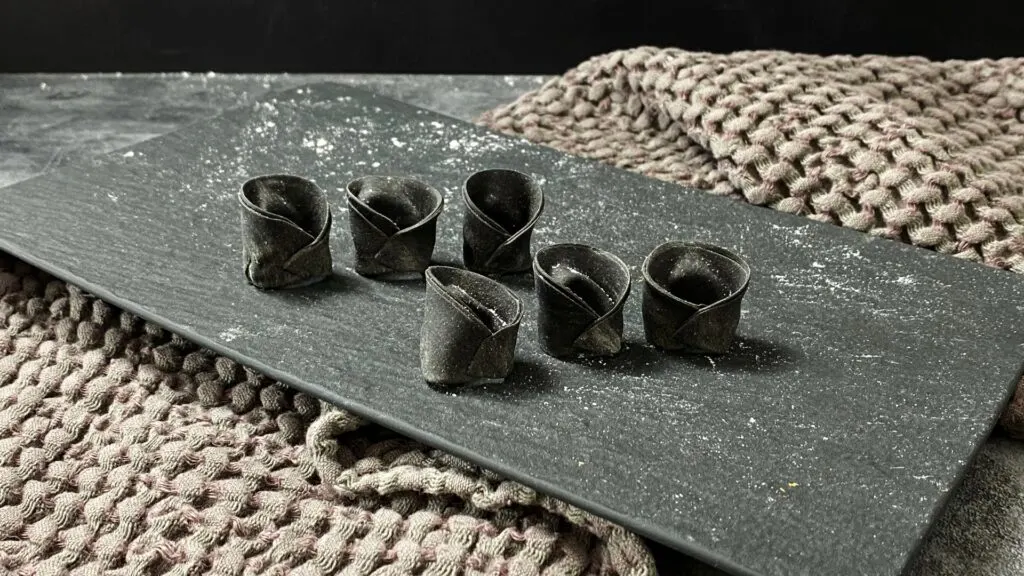
Shaping Cappelletti puts a lot of stress on the dough: It’s best to roll it out exceptionally thinly because folding it over each other gives it double the dough thickness at the end. On the other hand, if the dough is too thick from the start, the ratio between filling and dough is no longer optimal.
Folding Cappelletti stresses the dough even more: This is where the egg dough’s flexible and stable structure comes into play. Instead of tearing, it withstands the pressure without any problems.
By selectively mixing flour types or adding ingredients such as salt and olive oil, you can adapt the characteristics of your Dough to particular requirements.
In this small guide, I want to give some concrete tips on how the conscious composition of ingredients can succeed.
Which flour is suitable for pasta dough?
Flour is the main ingredient of pasta, but not all flour types have the same properties. Therefore, choosing the right one is crucial for success in pasta making.
In Italy, two types of flour are common: Semolina is flour made from durum wheat and used for pasta without egg. Farina di Grano Tenero Tipo 00 stands for soft wheat flour and is only suitable for making pasta with eggs. It is comparable to all-purpose flour.
Here is an article in which I explain in more detail how flour affects the structure of pasta dough:
- Flour for pasta: which types are suitable for pasta dough?
Pasta dough: with or without egg?
Here is an article in which I explain in more detail how egg affects the structure of pasta dough:
- Do you make pasta with or without eggs?
Pasta dough: with or without olive oil?
Here is an article in which I explain in more detail how olive oil affects the structure of pasta dough:
- Does olive oil need to be in pasta dough?
Pasta dough: with or without salt?
Salt is often included in pasta dough, but the ingredient is missing in some recipes. This makes you wonder: is it better to salt pasta dough or not?
I researched, and the answer is more complex than saying salt only adds flavor.
Pasta dough does not need to be salted, but the benefits go beyond improved flavor: salt makes pasta dough easier to work with. It has a strong effect on the structure of the dough, making it more elastic, plastic, and supple.
Here is an article in which I explain in more detail how salt affects the structure of pasta dough:
- Do you need to salt pasta dough?
Why does pasta dough need to rest?
Here is an article in which I explain in more detail why pasta dough should always rest:
- Why does pasta dough need to rest?
What to do when pasta dough is crumbly?
- 12 causes of brittle pasta (or brittle dough)
15+ Recipes for Pasta Dough
Beetroot Pasta Dough (Red and Pink Recipe)
If you're looking for a recipe for red pasta dough, you'll find it here. With beet and paprika powder, you give the dough a bright red color without losing the elastic properties of egg dough.
Chickpea Pasta Dough (Gluten-Free)
This pasta dough with chickpea flour and buckwheat is 100 percent gluten-free and is given a more stable consistency by the chickpea flour it contains.
Buckwheat Pasta Dough (4 Foolproof Recipes)
This pasta dough combines the optimal properties of gluten wheat flour and the nutty taste of buckwheat.
Whole Grain Pasta Dough (3 Foolproof Recipes)
This whole wheat dough with spelt flour tastes similar to standard egg dough but is healthier and worth a try. The only drawback is that it can not be rolled out as thin as dough made from pure wheat flour. It is also recommended to let the rolled-out dough dry for about 10 minutes to make it easier to cut thin ribbon noodles, for example.
Homemade Spelt Pasta Dough (3 Recipes)
This dough with spelt flour tastes similar to standart egg dough, but it is healthier and definitely worth a try. The only drawback is that it can not be rolled out as thin as dough made from pure wheat flour. Let the rolled-out dough dry for about 10 minutes to make it easier to cut thin ribbon noodles, for example.
Pasta Dough with Semolina (No Eggs)
This classic Italian pasta dough is most prevalent in south-Italy. It consists of flour and water and is vegan (no eggs). Italian durum wheat flour (Semolina) replaces the egg white's binding ability. This dough has more bite than the softer egg dough and is perfect for dried pasta shapes like cavatelli and orecchiette.
Fresh Egg Pasta Dough (Basic Recipe)
This basic recipe for pasta dough with egg has been tried and tested a million times and is guaranteed to work! It is mainly at home in the north of Italy and is usually rolled out into thin sheets of dough, which are then further processed into ribbon noodles or stuffed pasta. The egg dough is soft and easy to knead; still, it is particularly elastic and tear-resistant, which makes it the perfect pasta dough for beginners and experts.

